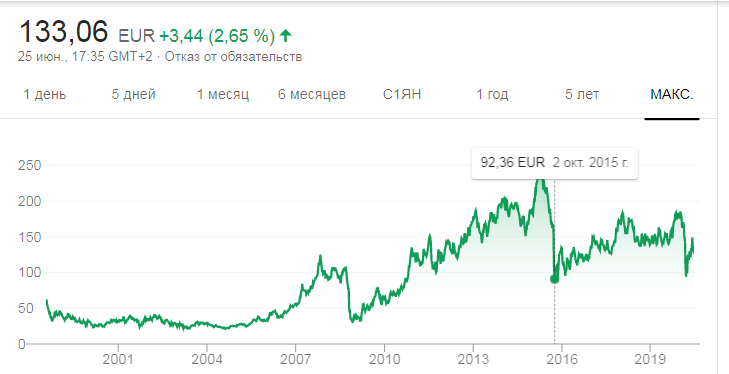Stock market patterns
No matter what various analytical agencies and university professors say, all trading in the stock market is based on patterns.
Yes, you can create short-term or long-term forecasts based on macroeconomic data and take into account market trends, but one scandal can reverse the trend and refute any forecast.
Therefore, many traders do not engage in analytics in the traditional sense of the term, but look for patterns in the stock market.
And after they find them, they try to use them to predict the future trend and plan upcoming transactions.
Therefore, it is much easier for a beginner to build his strategy on patterns than to learn how to analyze the market or pay an analytical agency for the necessary forecast.
Pullbacks after a sharp fall – the stronger the fall in stock prices after bad news, the stronger the correction that will follow.
We all remember very well how Volkswagen’s quotes collapsed in 2015 after the scandal with diesel cars and how then, literally in three months, the price rose by 40%, partially compensating for the drop in quotes:
 Quite often, professional investors wait until the security reaches the bottom after the news is released, and then make a purchase.
Quite often, professional investors wait until the security reaches the bottom after the news is released, and then make a purchase.
Mergers and acquisitions - information that two companies want to merge or a larger one is buying a smaller one leads to an increase in the price of shares of these companies.
Such news can not always be found in the public domain, but if it appears, then the opportunity should not be missed.
Indirect factors - or things that can indirectly affect profits.
For example, a rise in the price of copper increases the cost of production of electric motors, which means this will lead to a reduction in the profits of the industries that produce these motors. That is, before publishing reports from companies that use a lot of copper in their production, you can open sales transactions.
A similar pattern can be constructed with the price of oil and Gazprom shares. Moreover, there are many such relationships; the main thing is to try to think logically and open new positions in time.
Before the reporting period - there is a decrease in value if the company that issued it is likely to end the reporting period with a loss, and vice versa, an increase in quotations if the quarter was successful and profitable.
For example, this happened with Amazon shares during the corona virus; even before the publication of reports, it was clear that the company was ending the first quarter of 2020 with a profit. Since sales growth was 33% compared to the same period in 2019:
 On the eve of the end of the quarter, Amazon shares went into active growth, as most traders hoped for a good profit result.
On the eve of the end of the quarter, Amazon shares went into active growth, as most traders hoped for a good profit result.
That is, by analyzing the company’s activities for the reporting period, one can draw conclusions about what awaits its shares before publishing reports.
However, you should be prepared if the reports do not meet investors' expectations - this may cause a drop in quotes. The laws of the stock market allow you to form a simple trading strategy based on news and the ability to draw the right conclusions from the information received.
It should be noted that the stock market is also often subject to patterns that can be found in Forex - http://time-forex.com/interes/zakonomernosti-foreks
